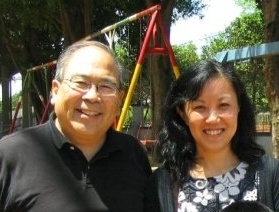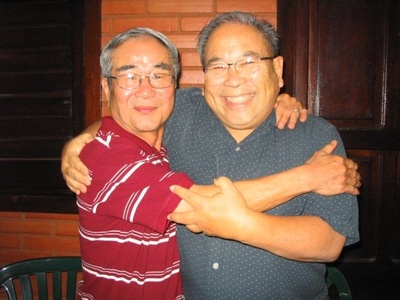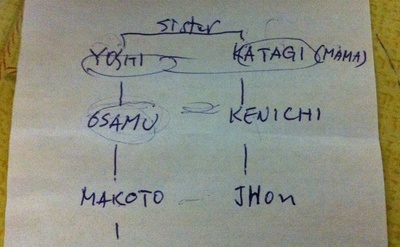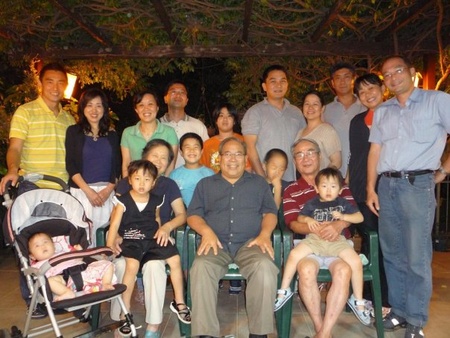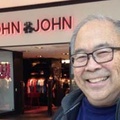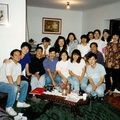Read part 1 >>
Night falls on the Paraguayan landscape. The drone of thousands of insects begins to grow as the sun goes down. Bugs the size of B-52s begin to take flight and circle around any light source in the darkening countryside.
October 2008 and I was in Pirapó, one of nine farming colonies settled by Japanese immigrants on land that was set aside for agricultural development by the Paraguayan government. These colonies, scattered throughout the country, still maintain a strong cultural and linguistic connection to their Japanese heritage, being geographically isolated from their surrounding communities. The year was 2008 but it felt like I had time-traveled back to the 1930s. Old farming equipment, wooden farmhouses, the streets though asphalted in some places, are generally often a muddy, red clay.
I was back again in Paraguay after an absence of almost ten years. Visiting these colonies stirred my imagination to think of what life must have been for the early Japanese pioneers. I thought about my own relative, Makoto-san, and his arrival in Paraguay some forty years earlier. I wondered to myself, “If it’s like this now, it must have been really primitive back then!” Being here, I felt the urge to begin again the research into my Paraguayan family connections.
After visiting several of these Japanese farming colonies, I hit the road and traveled back to the capital city of Asunción. In conversation with my homestay family, they had a vague idea that Makoto-san was still living and that his family might be in the capital. But at that moment no active or immediate investigation took place as our schedules were filled with visits to the Japanese community: community members, families, students. It turned out that many of the junior high and high school students I knew from the outlying colonies were now in Asunción, studying at the national university (Universidad Nacional de Asunción). Imagine Luke Skywalker moving from Tatooine to attend the Imperial Academy.
On my last day in Asunción, I visited a former student friend of mine who had joined the staff of a Paraguayan Nikkei private school. While on the campus, we had an unplanned encounter with a young mother and her two sons. The mother, I was told, was the daughter of my dad’s relative! As I met the mom and stood with her two boys, my host family, who was waiting off to the side, became very excited. “Yoku niteru! Yoku niteru!” they were saying. The phrase in Japanese means simply, “You’re so similar, you look alike!” They were commenting on how much one of the boys looked like me. Poor kid.
It was my last day in the city, but we briefly talked about the possibility of “próxima vez, otra visita” (tsugi mata ai mashou). It was their wish and hope that the next time I was in Asunción I would include plans to visit the family, and Makoto-san who was still living.
That next time would come around in October 2009. Through the kindness of my Asunción homestay friends, a dinner party was arranged where I would have the opportunity to see my father’s Paraguayan relative again after an interval of twelve years, and to meet his family for the first time.
Makoto-san was a kind and generous host. At the very first glance, as I looked at his face, I could see the face of my own father. There was a resemblance. “Yoku niteru.” And unlike the difficulties in communication which characterized our first encounter, this time we had various people at the dinner party who could interpret from Japanese or Spanish to English. Instead of stumbling around with the language, we could more clearly understand one another.
The question that he had asked me in 1997 came up again. “How exactly are we related?” Through interpreters, I was able to share my mother’s impression that my father’s mother was somehow related to Makoto-san’s family. Talk as we might, we were unable to arrive at any conclusions, but agreed to meet.
We would get together for dinner again in 2010. And then in 2012, we had a breakthrough as Makoto-san’s wife revealed a bit of research that she had done. She drew a little family tree which showed that my father’s mother and Makoto-san’s grandmother were sisters.
Finally! The answer to the question was at hand! While we have a common familial connection in our past, the question remains whether we are second cousins or third cousins. I’ll let the ancestry experts among you work that out. Here is the drawing that was made for me.
Because I work in South America, I have encountered many people who tell me that they have relatives in Brazil or Peru. Relatives that they’ve never met. By the same token, I’ve sat in homes in Brazil and Paraguay where families will pull out a leather-bound address book and point to the name of a relative in the USA. There are the names of family members who live in San Gabriel or Gardena or Chicago. It’s such an fascinating moment to think of the political and economic conditions that drove family members to resettle in completely different continents. With the advent of the internet and social media tools like Facebook, the world and our accessibility to others becomes just a little bit easier. It may be just what you need to find that long lost relative on the other side of the world! What a great time to give it a try!
© 2013 John Katagi



